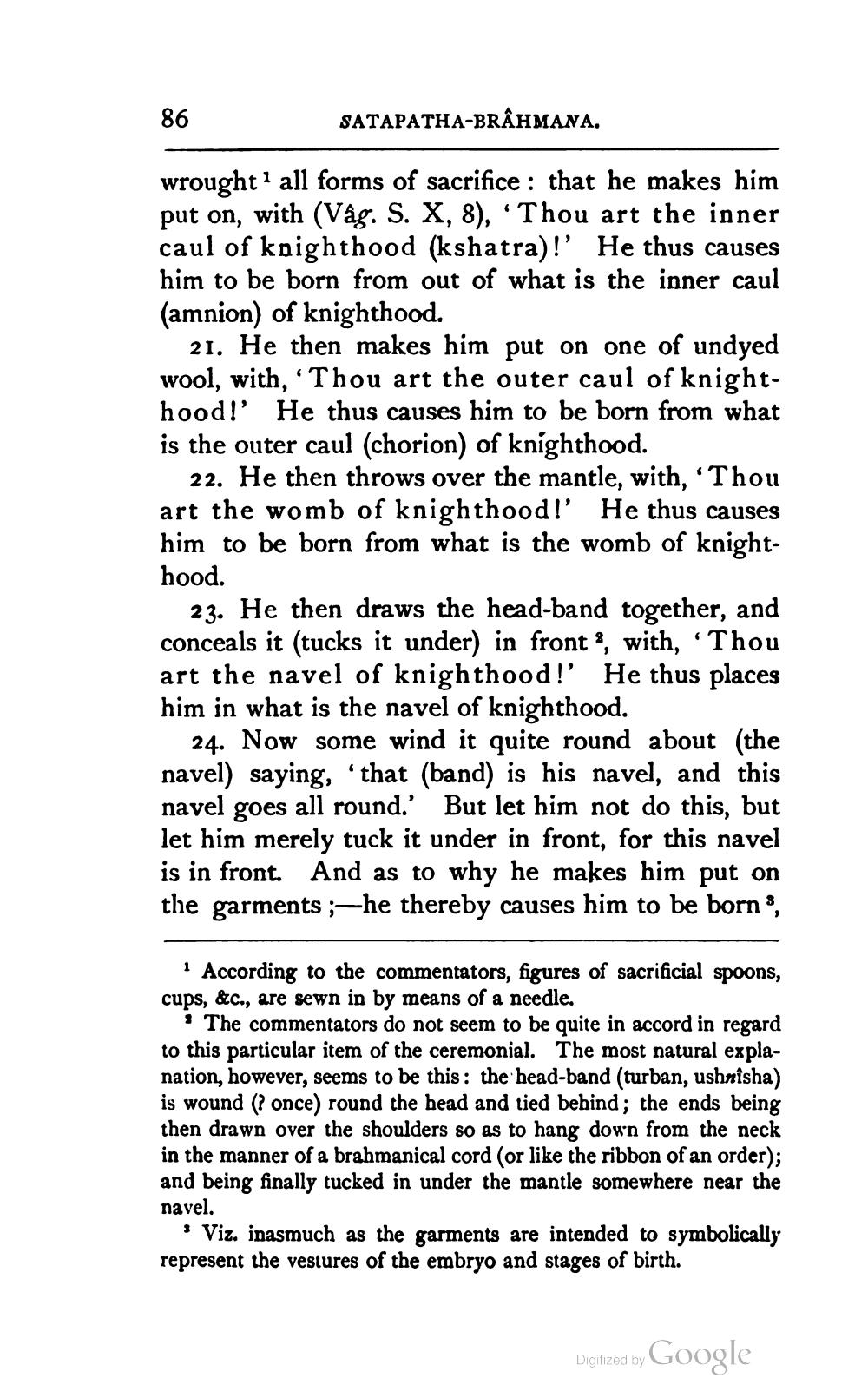________________
86
SATAPATHA-BRÂHMANA.
wrought all forms of sacrifice : that he makes him put on, with (Våg. S. X, 8), 'Thou art the inner caul of knighthood (kshatra)!' He thus causes him to be born from out of what is the inner caul (amnion) of knighthood.
21. He then makes him put on one of undyed wool, with, 'Thou art the outer caul of knighthood!' He thus causes him to be born from what is the outer caul (chorion) of knighthood.
22. He then throws over the mantle, with, 'Thou art the womb of knighthood!' He thus causes him to be born from what is the womb of knighthood.
23. He then draws the head-band together, and conceals it (tucks it under) in front, with, “Thou art the navel of knighthood!' He thus places him in what is the navel of knighthood.
24. Now some wind it quite round about (the navel) saying, “that (band) is his navel, and this navel goes all round.' But let him not do this, but let him merely tuck it under in front, for this navel is in front. And as to why he makes him put on the garments ;-he thereby causes him to be born,
According to the commentators, figures of sacrificial spoons, cups, &c., are sewn in by means of a needle.
* The commentators do not seem to be quite in accord in regard to this particular item of the ceremonial. The most natural explanation, however, seems to be this: the head-band (turban, ushnisha) is wound (? once) round the head and tied behind; the ends being then drawn over the shoulders so as to hang down from the neck in the manner of a brahmanical cord (or like the ribbon of an order); and being finally tucked in under the mantle somewhere near the navel.
* Viz. inasmuch as the garments are intended to symbolically represent the vestures of the embryo and stages of birth.
Digitized by Google




